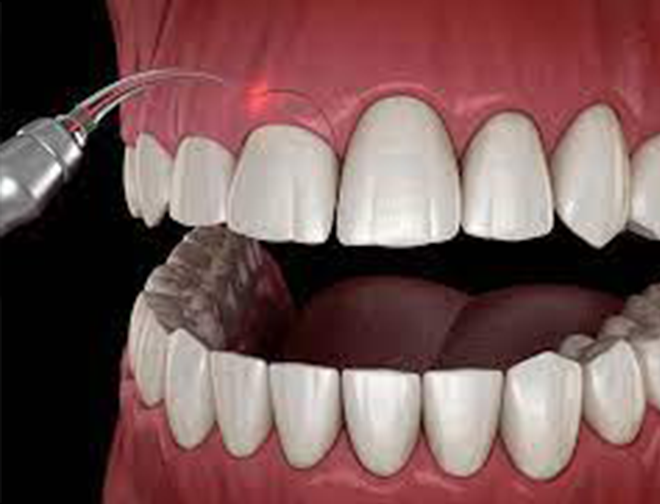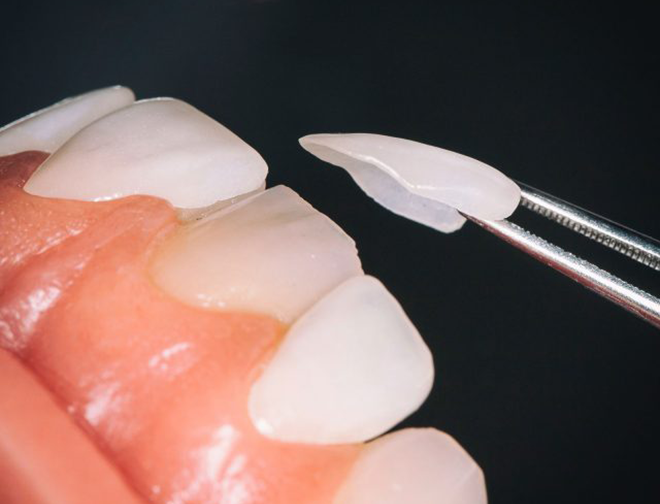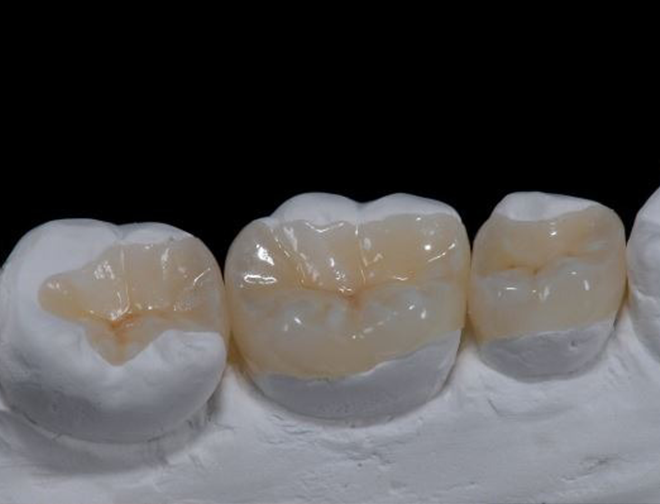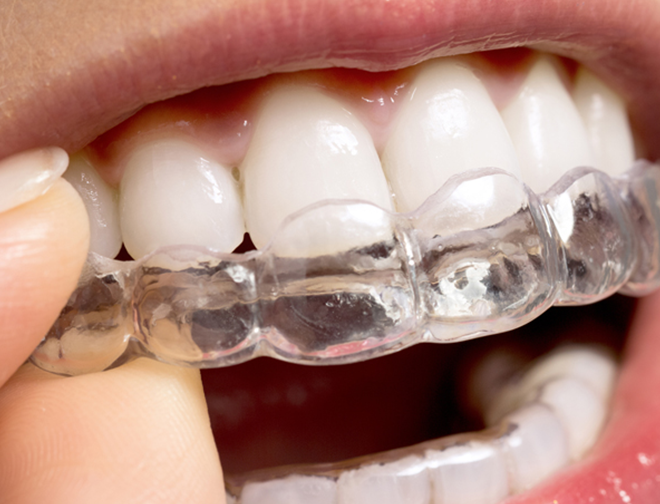Teeth whitening
Teeth whitening is not just a passing trend, but a need for healthier smile appearance. White and sparkling teeth are always associated with healthy teeth. Before undergoing teeth whitening, your dentist at ETERNAdent will analyze the reason for the teeth staining. The most common reasons for darker teeth are as follows:
- Naturally darker teeth color Just like hair and eyes, teeth have their natural shade, which happens to be darker in some people.
- Poor oral hygiene or stains from red wine or cigarettes In these cases, we remove the stains first with a thorough deep cleaning, and after we reach the natural tooth color, we choose whether to whiten or not.
- Age: Over time, teeth naturally become darker.
- Medications: Certain remedies like the antibiotic Tetracycline were widely used in children in the 70s. Later, it was proven to cause permanent brown-gray stains on the permanent teeth, known as Tetracycline teeth. Depending on the stage of discoloration, the systems that we use in ETERNAdent can provide whitening results even in these cases.
Over the past two decades, the American Dental Association’s Council for Scientific Affairs has monitored the increase in the number of teeth whitening products available. As the market for these products has grown,
the Association has classified them into two main groups:
– Products that aid in restoring the natural color of teeth by removing stains caused by food, beverages, and tobacco
– Products that aid in whitening the natural tooth structure
Non-professional products are readily available in pharmacies and supermarkets, and it is advisable to consult a dentist before using any of these products. Safe whitening products are typically marked with the seal of approval from the American Dental Association and the FDI (World Dental Association).
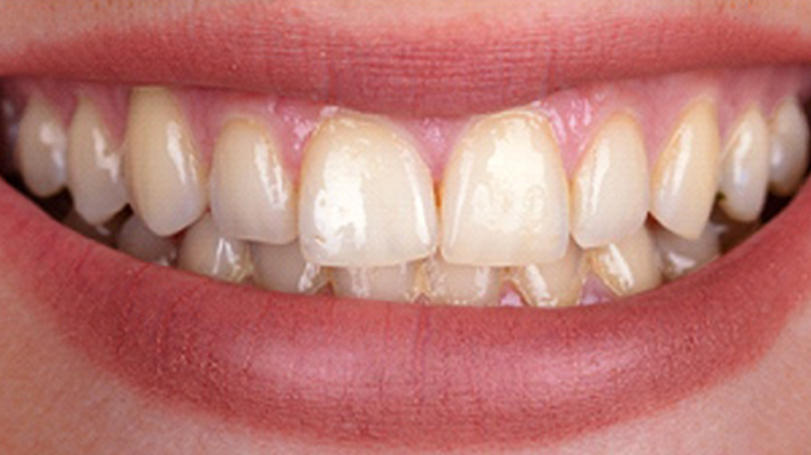
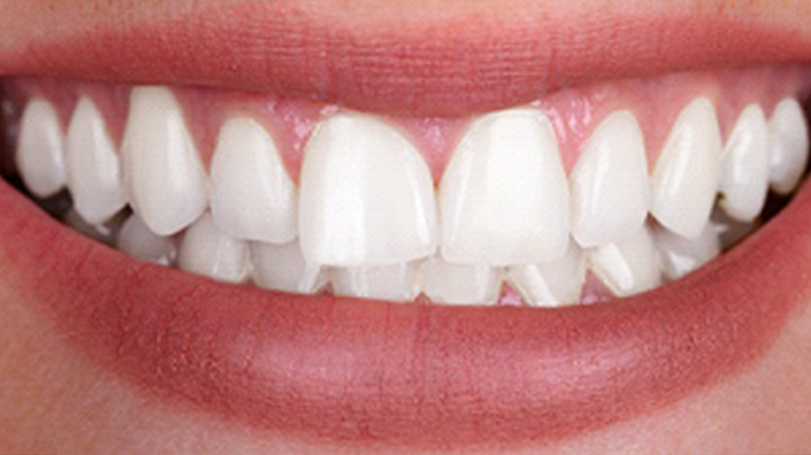
Whitening products with a peroxide base, which are available over-the-counter (OCT) in pharmacies and supermarkets, usually contain carbamide peroxide. This compound breaks down into hydrogen peroxide and urea, where hydrogen peroxide is the active substance that does the bleaching. While these products can achieve good results, it is crucial to follow the strict instructions for use and consult a dentist before using them. Alongside these efficient whitening products, there are also aggressive bleaching products on the market that can cause damage to the teeth tissue. The main problem with these products is their uncontrolled use, concentration of bleaching gel, and unsupervised use, which can lead to hot and cold sensitivity and soft tissue damage. Tissue damage is usually caused by ill-fitting whitening trays, which are not individually fabricated for each patient and leak the gel in the oral cavity. Even OCT whitening products are not advisable to be used without professional supervision.
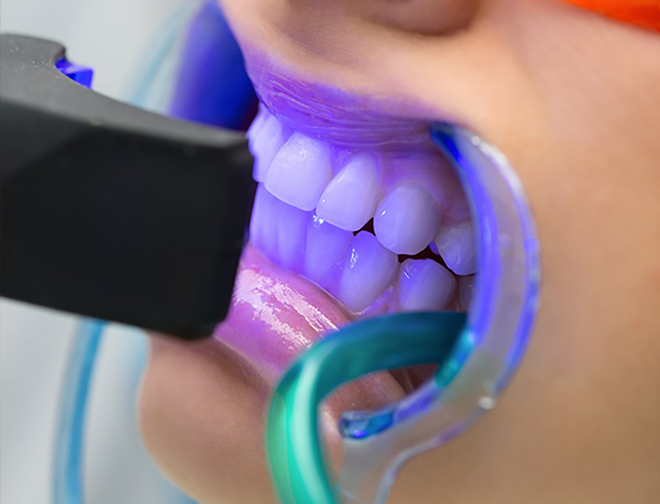
The professional whitening is performed under the supervision of the dentist, based on either urea peroxide or hydrogen peroxide. It is carried out in a doctor’s office under controlled conditions and produces immediate results (up to 9 shades whiter teeth in one visit). At ETERNAdent, the procedure takes around an hour and a half and utilizes a system that guarantees safety, fast results, and zero sensitivity.
The other type of professional whitening is homemade whitening. For this technique, we use specially-made bleaching trays that are individually tailored to each patient, as well as professional whitening gels with lower concentrations compared to those used in the in-office whitening procedure.
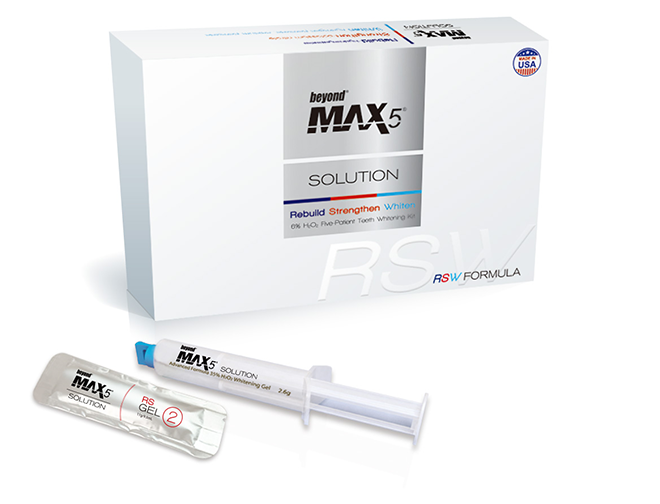
WHAT SHOULD YOU CONSIDER BEFORE WHITENING YOUR TEETH?TEETH WHITENING IS NOT PERMANENT. To maintain the white shade of your teeth, it is necessary to repeat domestic whitening every 2-3 months. Office whitening is only recommended once a year.
- If you have a crown or composite filling in the front region, they cannot be whitened like natural teeth. In this case, you should replace them with new crowns/seals that match the new shade of your teeth. It is important to note that the color of the crown/seal will eventually return to your natural teeth color, becoming less bright. If your front teeth are all natural and without crowns or fillings, color maintenance does not need to be done as frequently.
- People who have tooth erosion, cracks, and large, but “loose” fillings often experience sensitivity after teeth whitening. It is essential to consult with a licensed dentist before starting any whitening treatment.
- Teeth bleaching is a cosmetic procedure that is only appropriate if the patient has healthy gums and has adopted correct and effective techniques for oral hygiene.
CONCLUSION: The American Dental Association advises consulting with a dentist before using any whitening product, especially for patients with large fillings, porcelain crowns, and dark stains. A detailed examination is necessary to determine if a patient is a candidate for whitening. The dentist and the patient will determine the most appropriate treatment together, and the dentist can supervise the process and provide advice for the use of whitening products as part of a comprehensive and appropriate therapy plan.




